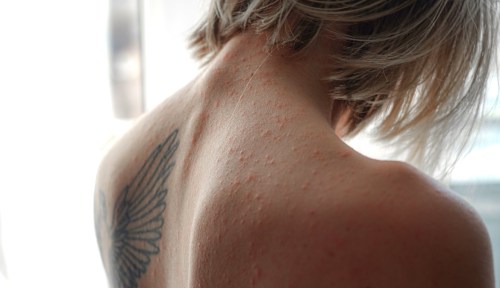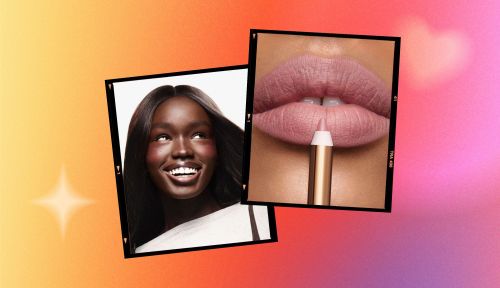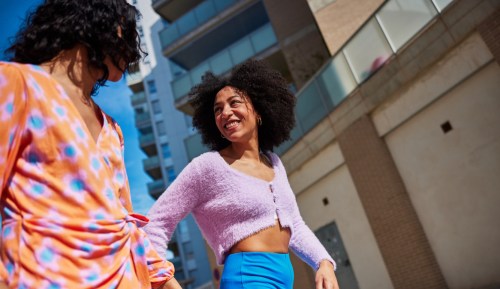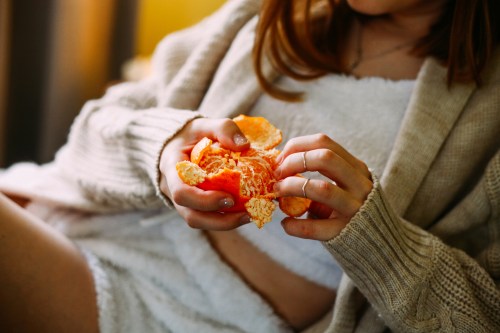Our editors independently select these products. Making a purchase through our links may earn Well+Good a commission
When The World Health Organization (WHO) declared monkeypox a global health crisis on July 23, it solidified many people’s concerns about the onset of a new pandemic. But for the millions of Americans dealing with visible skin conditions, it’s created another layer of fear: Being wrongly accused of having the virus.
Experts in This Article
board-certified dermatologist at Medical Dermatology and Cosmetic Surgery in New York
According to the WHO, the most common symptoms of monkeypox include “fever, headache, muscle aches, back pain, low energy, and swollen lymph nodes,” which are often accompanied by a rash. “The rash can be found on the face, palms of the hands, soles of the feet, eyes, mouth, throat, groin, and genital and/or anal regions of the body. The number of lesions can range from one to several thousand. Lesions begin flat, then fill with liquid before they crust over, dry up and fall off, with a fresh layer of skin forming underneath,” the agency writes.
To the untrained eye, this rash can look a lot like psoriasis, eczema, or even severe acne—which has given rise to discriminatory practices against people dealing with these skin concerns.
The reality of living with a visible skin condition amidst the monkeypox outbreak
In a recent TikTok video, user @redm3at shared her experience of being pulled off of an airplane and “interrogated” about her eczema. “I’ve never been so humiliated in my entire life,” she writes. “Misinformation leads to discrimination/hostility. Everyone with a visible non-contagious skin condition has been anticipating this.”
Based on the post’s comments section, she’s right. “People used to bully me thinking my eczema was contagious and I’m terrified it’s gonna happen again,” writes one user. “As an adult with cystic acne, I have been scared. I’ve been trying so hard to cover it up out of fear,” shares another. Another person shares, “I have really bad acne on my face and body from hormone treatments and I’m waiting for the inevitable accusation,” while another user writes, “I have eczema, [hidradenitis suppurativa], and cystic acne. The trifecta of looking like I have monkeypox, and I’m terrified.”
This Parisian Skincare Brand Is Launching in the United States for the First Time—Here’s What a Derm Wants You to Know

We’re Calling It: Cleansing Balms Are the Face Wash of the Future—Here Are 3 to Add to Your Cart

This Is the One Product That Scarlett Johansson Always Keeps in Her Purse and on Her Bedside Table

“At this time, monkeypox is getting confused with other skin conditions mostly because while some presentations of monkeypox are considered more classic, we are still learning more about the clinical appearance that is specific to this outbreak,” Marisa Garshick, MD, a board-certified dermatologist at MDCS Dermatology in New York City, tells Well+Good.
But much of the vilification surrounding visible skin disorders comes down to misinformation about what a monkeypox rash actually looks like, which is why it’s worth clearing up once and for all.
How to differentiate between a monkeypox rash and other common visible skin conditions
According to Jeannette Graf, MD, a board-certified dermatologist and assistant clinical professor of dermatology at Mount Sinai School of Medicine, a monkeypox rash most commonly looks like pustules and bumps with pus in them. “It has primarily a distinct appearance characterized by blisters,” she says.
Dr. Garshick adds that a monkeypox rash is more likely to go through different phases in appearance over a five to seven-day period, starting as a flat red mark and then raising to look like a blister or pus-filled lesion before scabbing, and may appear with a small depression in the skin. You’ll also want to consider where these rashes are developing, as Dr. Garshick explains that monkeypox rashes have typically been described as occurring in the perianal area or near the genitals.
On the other hand, eczema (which affects about 31.6 million people in the U.S.) is characterized by red, over-inflamed skin; psoriasis (which affects about 7.5 million people in the U.S) looks like dry, crusty patches; and severe, acne (which affects about 6.6 million people in the U.S.) appears as round, red bumps under the skin. This is just a small selection of the visible skin conditions that have people living in fear of being discriminated against (atopic dermatitis and rosacea are also among the many others on the list), but it’s worth noting they’re all a lot more common than monkeypox (which has affected 18,101 people in the U.S. as of August 30), and not a single one of them is contagious.
What you can do to protect yourself against monkeypox
Of course, even if you can differentiate between monkeypox and another visible skin condition, it goes without saying that it’s never okay to publicly shame someone who you suspect may be dealing with an outbreak of the virus (but based on what’s happening on the Internet, it apparently does need to be said). If you’re concerned about contracting the virus, the best thing you can do is protect yourself.
According to the Centers for Disease Control and Prevention (CDC), monkeypox can be spread through direct contact with a rash, scab, or body fluids of an infected person; touching objects, fabrics (like clothing, bedding, and towel), or surfaces that someone with monkeypox has used; and contact with mucus or saliva with the virus in it. With that in mind, wash your hands regularly, wear a mask, and get the vaccine if you’re eligible.
Sign Up for Our Daily Newsletter
Get all the latest in wellness, trends, food, fitness, beauty, and more delivered right to your inbox.
Got it, you've been added to our email list.








